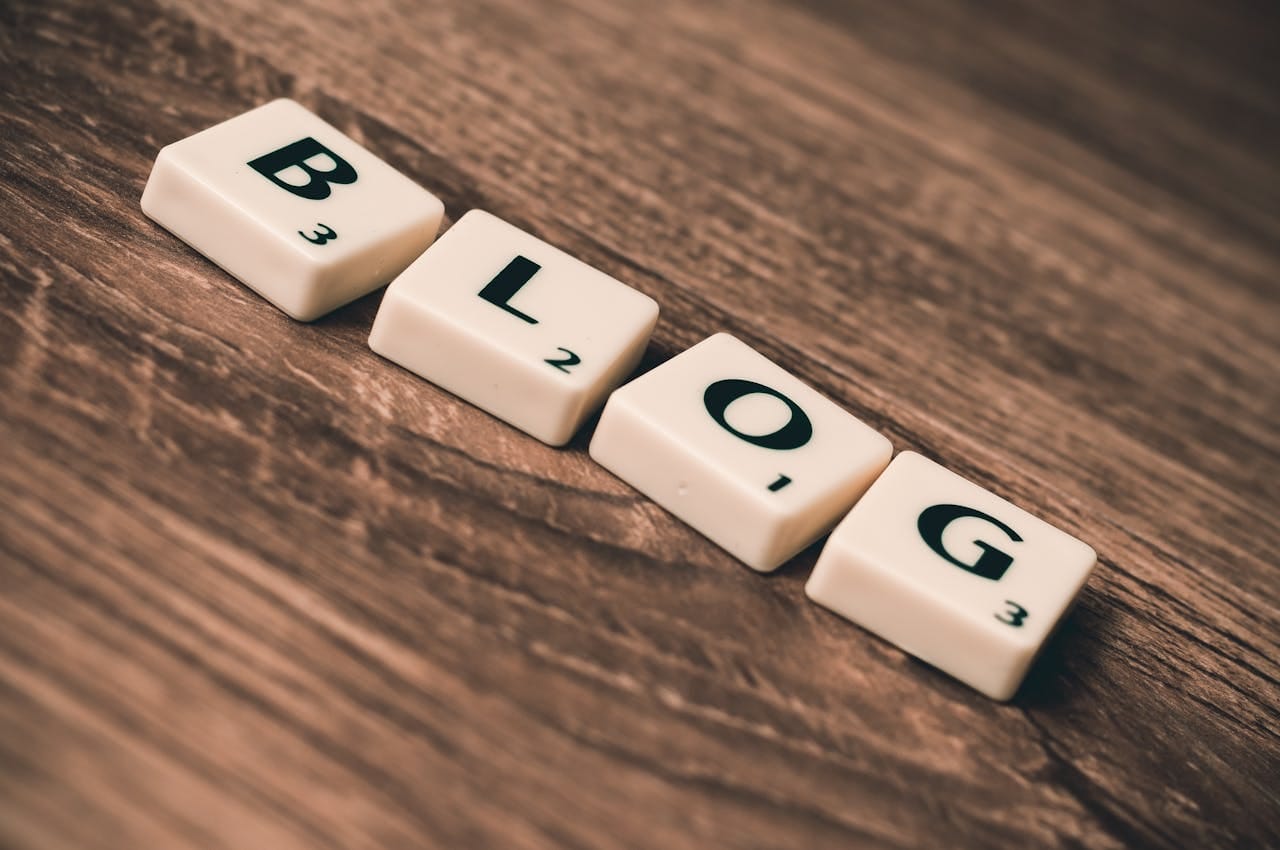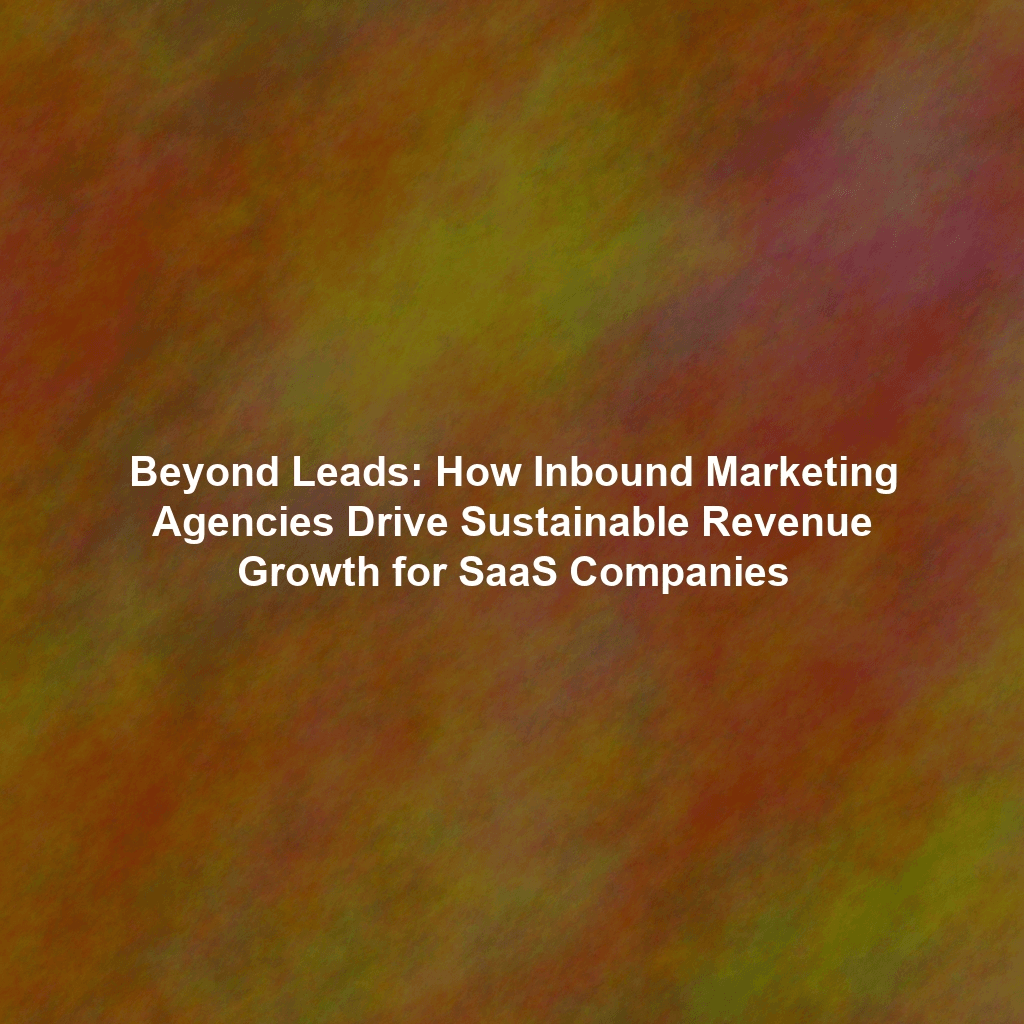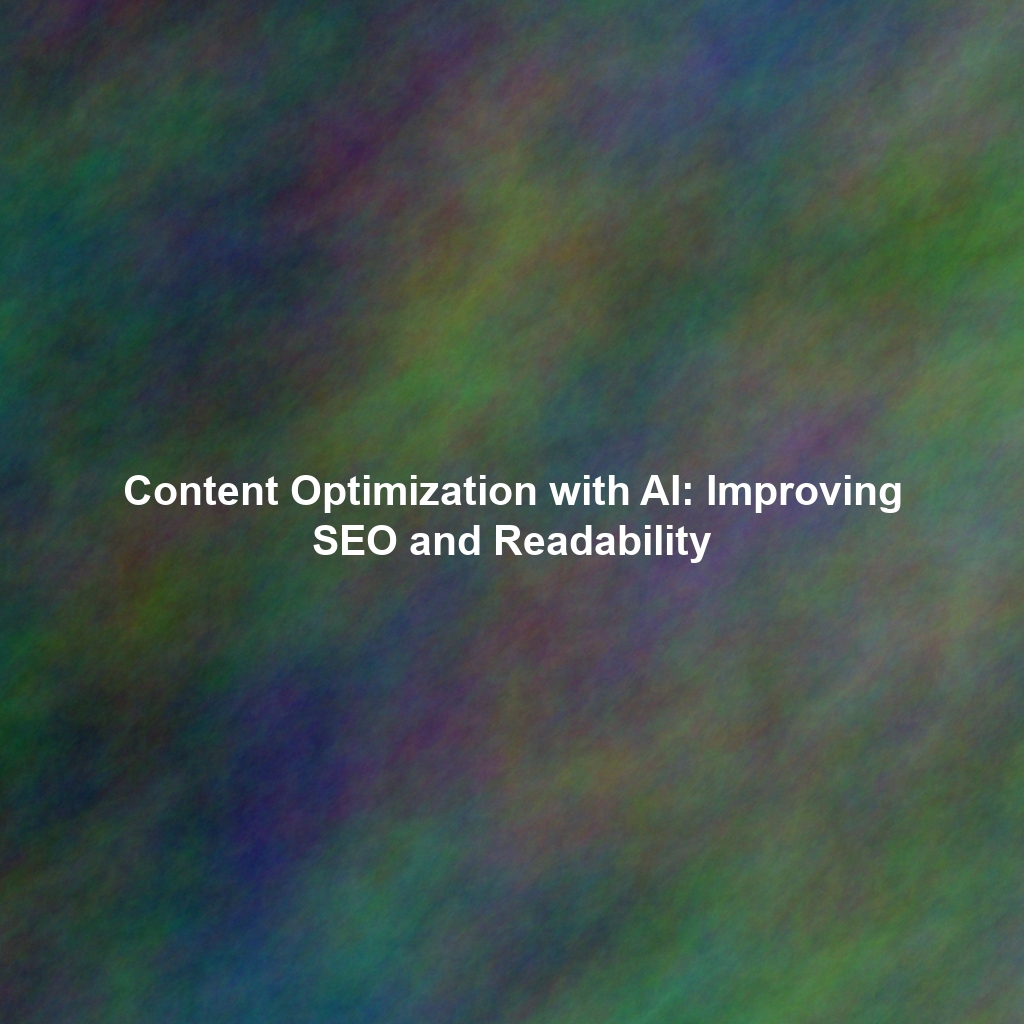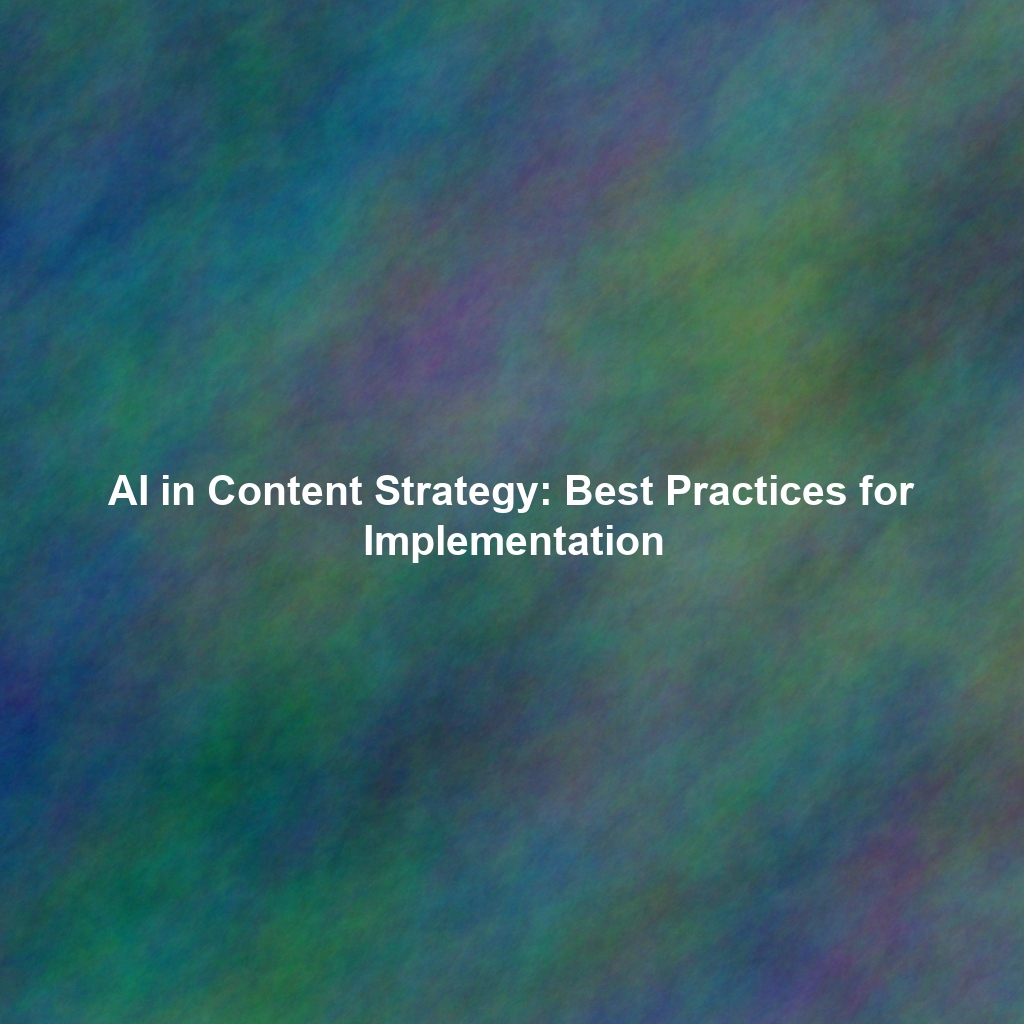In the highly competitive SaaS arena, a strategic approach to marketing isn’t just an option; it’s a necessity. Unlike traditional businesses, SaaS relies on recurring revenue models, making customer acquisition cost (CAC) and customer lifetime value (LTV) paramount. This guide delves deep into why inbound marketing is uniquely suited for SaaS, the specific challenges it addresses, and how to forge a partnership with an agency that will propel your growth.
The SaaS-Specific Challenges: Why Traditional Marketing Falls Short
SaaS businesses face unique marketing challenges compared to traditional product or service companies. These complexities necessitate a specialized approach that generic advertising often fails to deliver. Understanding these hurdles is the first step toward overcoming them:
- High Customer Acquisition Costs (CAC): Acquiring new SaaS customers can be surprisingly expensive. The average CAC for SaaS companies is around $205, but for B2B SaaS, which often involves complex sales cycles, multiple decision-makers, and the need for personalized demos, this cost can significantly dwarf B2C counterparts, sometimes exceeding $400 for enterprise software. Traditional outbound methods, like cold calling or broad advertising, often yield low conversion rates, inflating CAC further.
- Churn Rate: Retaining customers is not just crucial for SaaS profitability; it’s existential. High churn rates can quickly erode gains from new customer acquisition. While the average monthly churn rate for SaaS companies is around 5%, a “good” churn rate is generally 3% or less. For larger businesses, annual logo (customer) churn might be 1-2%, while smaller businesses might see 3-7%. Reasons for churn vary, but often include poor customer support, a mismatch in product-market fit, or technical glitches.
- Demonstrating Intangible Value: Unlike a physical product, SaaS offerings are intangible. Potential customers need to clearly understand the value proposition of your software solution and how it directly solves their pain points. This requires more than just feature lists; it demands compelling use cases, educational content, and proof of ROI.
- Building Trust and Authority: In a crowded market, establishing yourself as a thought leader in your niche is vital to attracting and retaining customers. Buyers are increasingly skeptical of direct sales pitches and instead seek out trusted sources of information. This aligns directly with Google’s E-E-A-T (Experience, Expertise, Authoritativeness, Trustworthiness) guidelines, emphasizing content that demonstrates deep knowledge and reliability.
- Scalability of Sales & Marketing: As a SaaS company grows, so does the need to scale its customer acquisition efforts. Traditional, manual sales processes can become bottlenecks. Marketing needs to be automated and optimized to handle increasing lead volumes without a proportional increase in cost or human resources.
Traditional marketing methods often fall short in addressing these specific challenges. Generic advertising and outbound sales tactics may generate leads, but they often fail to nurture those leads into paying customers and build long-term relationships essential for recurring revenue.
Inbound Marketing: A Tailored Approach for SaaS Success
Inbound marketing, on the other hand, is perfectly suited for SaaS companies. By focusing on attracting, engaging, and delighting customers, inbound marketing agencies can help SaaS businesses:
- Reduce Customer Acquisition Cost (CAC): Through targeted content and SEO, inbound strategies attract qualified leads organically, significantly reducing reliance on expensive paid advertising. By providing value upfront, inbound lowers the barrier to entry and pre-qualifies prospects, making the sales cycle more efficient.
- Maximize Customer Lifetime Value (LTV): Inbound isn’t just about getting customers in the door; it’s about keeping them. By nurturing leads and existing customers with personalized content, onboarding support, and ongoing value delivery, agencies foster loyalty and increase retention, directly impacting LTV.
- Build Sustainable Recurring Revenue Streams: Inbound strategies focus on the entire customer journey, from initial awareness to product adoption and long-term retention. This continuous engagement ensures customers remain delighted, leading to higher retention rates, upsells, and a stable foundation for recurring revenue.
💡 Pro-Tip: The Flywheel Effect
Think of inbound marketing for SaaS not as a linear funnel, but as a “flywheel.” Your satisfied customers become advocates, attracting new leads, creating a virtuous cycle of growth. This is especially potent in SaaS, where product-led growth (PLG) strategies, emphasizing user experience and self-service, can significantly reduce CAC and drive organic adoption.
Key Inbound Strategies for SaaS Companies
Here are some of the core inbound marketing strategies that agencies leverage for SaaS success, designed to address the unique challenges of the software industry:
- Content Marketing: This is the cornerstone. Creating high-quality, informative, and problem-solving content that addresses the pain points of your target audience at every stage of their buyer’s journey. This includes:
- Blog Posts: Addressing common questions, industry trends, and “how-to” guides (e.g., “How to Reduce Churn in Your SaaS Business”).
- Ebooks & Whitepapers: In-depth resources for lead generation, demonstrating expertise.
- Webinars & Video Tutorials: Showcasing product functionality, offering expert insights, and providing visual learning experiences. Many SaaS companies like Ahrefs and Hootsuite leverage video and webinars effectively.
- Case Studies & Success Stories: Highlighting how your SaaS solution has helped real customers achieve tangible results. These are critical for building trust and demonstrating value.
- Comparison Guides: Helping prospects compare your solution to competitors, positioning your strengths.
- Templates & Checklists: Providing practical tools that users can immediately apply.
Companies like HubSpot, Mailchimp, and Moz are prime examples of SaaS businesses that have built empires on the back of exceptional content marketing.
- Search Engine Optimization (SEO): Optimizing your website and content for relevant keywords to improve organic search rankings and attract qualified traffic. For SaaS, this involves:
- In-depth Keyword Research: Focusing on long-tail keywords, problem-solution queries, and comparison terms (e.g., “best CRM for small business,” “[Your Product Name] vs. [Competitor]”).
- Technical SEO: Ensuring your site is fast, mobile-friendly, and easily crawlable by search engines.
- Content Clusters/Pillar Pages: Organizing content around broad topics (pillar pages) linked to more specific articles (cluster content) to establish topical authority.
- Link Building: Earning high-quality backlinks from reputable industry sites to boost domain authority.
A well-executed SaaS SEO strategy ensures your target audience finds your solution precisely when they’re looking for it.
- Social Media Marketing: Building a strong, engaging social media presence to connect with your audience, share valuable content, and drive traffic. For B2B SaaS, LinkedIn is often a primary channel for thought leadership and connecting with decision-makers.
- Marketing Automation: Using sophisticated automation tools to nurture leads, personalize email campaigns, and streamline marketing processes at scale. This includes:
- Lead Scoring: Automatically assigning scores to leads based on their engagement and demographic data, helping sales prioritize.
- Personalized Email Sequences: Delivering tailored content and offers based on user behavior (e.g., a free trial user receives different emails than someone who just downloaded an ebook).
- Automated Onboarding Workflows: Guiding new users through product setup and initial feature adoption.
- Re-engagement Campaigns: Nurturing inactive users or those who abandoned a trial.
Case studies show marketing automation can lead to significant improvements, such as a 525% increase in click-through rates for personalized emails (Mailchimp/Zapier integration) or recovering over $120K in revenue through cart recovery automation (Snatcher).
- Customer Relationship Management (CRM): Integrating your marketing efforts with a CRM system (like Salesforce or HubSpot CRM) to track every customer interaction, personalize communication, and improve customer satisfaction throughout their lifecycle. This provides a unified view of the customer.
- Customer Journey Optimization & Success: Analyzing and optimizing the entire customer journey, from initial awareness to product adoption and long-term retention. This involves:
- Seamless Onboarding: Ensuring new users quickly understand and gain value from your product.
- Proactive Support: Addressing potential issues before they become problems.
- Feature Adoption Campaigns: Educating existing users on new features to increase product stickiness.
- Advocacy Programs: Encouraging satisfied customers to become brand advocates through testimonials, reviews, and referrals.
Effective customer success strategies are paramount for SaaS, directly impacting LTV and churn.
Case Studies: Inbound Marketing in Action for SaaS
Case Study 1: Reducing CAC for a Project Management SaaS
Challenge: A growing project management SaaS company, “TaskFlow,” was struggling with an unsustainable Customer Acquisition Cost (CAC) of over $350 per new subscriber, primarily due to heavy reliance on expensive paid advertising campaigns. Their organic traffic was minimal, and their content was generic, failing to attract qualified leads.
Solution: An inbound marketing agency partnered with TaskFlow to overhaul their digital presence. The agency implemented a robust content marketing strategy focused on creating high-value resources for project managers, including:
- In-depth blog posts on agile methodologies, remote team management, and project budgeting.
- Downloadable templates for project plans and Gantt charts.
- Expert-led webinars on overcoming common project roadblocks.
- Case studies showcasing TaskFlow’s impact on real-world projects.
Simultaneously, they executed a comprehensive SEO strategy, optimizing existing content and new articles for long-tail keywords like “best project management software for startups” and “how to track project progress efficiently.” They also built a strong presence on LinkedIn, engaging with industry discussions and sharing valuable insights.
Results: Within seven months, TaskFlow saw a remarkable 45% reduction in CAC, dropping to approximately $190 per subscriber. Their organic traffic increased by 110%, and lead generation from content marketing channels surged by 80%. This allowed them to reallocate a significant portion of their advertising budget to product development and customer success initiatives.
Case Study 2: Increasing LTV and Reducing Churn for a CRM SaaS
Challenge: “ConnectFlow,” a CRM SaaS company, faced a persistent churn rate of 7% monthly, significantly impacting their Customer Lifetime Value (LTV). New customers often struggled with onboarding, leading to low product adoption and early cancellations.
Solution: The agency developed a comprehensive, automated lead nurturing and customer success program. This included:
- Personalized Onboarding: A series of trigger-based emails and in-app messages guiding new users through initial setup, key feature adoption, and integration with other tools. This included short, personalized training videos.
- Ongoing Engagement Content: Regular newsletters with tips and tricks for maximizing CRM usage, advanced feature spotlights, and invitations to exclusive user webinars.
- Proactive Customer Success: Implementing a customer health scoring system to identify at-risk users early. Dedicated customer success managers (CSMs) then proactively reached out with tailored support and solutions.
- Feedback Loops: Implementing Net Promoter Score (NPS) surveys and in-app feedback mechanisms to continuously gather user sentiment and inform product improvements.
Results: Over a year, ConnectFlow experienced a 25% increase in Customer Lifetime Value (LTV), driven by a significant reduction in their monthly churn rate to 3.5%. Product adoption rates improved by 40%, and customer satisfaction scores (CSAT) saw a noticeable rise, leading to more positive reviews and referrals.
Case Study 3: Boosting Trial-to-Paid Conversion for an Analytics SaaS
Challenge: An analytics SaaS platform, “DataSense,” offered a popular 14-day free trial, but their conversion rate from trial to paid subscriber was stagnating at a low 8%. Many users signed up but didn’t fully explore the product’s capabilities or understand its full value within the trial period.
Solution: The inbound agency focused on optimizing the trial experience through targeted content and automation. They implemented:
- Behavioral-Triggered Email Nurturing: Emails were sent based on user actions (or inactions) within the trial. For example, if a user hadn’t connected a data source by day 3, they received an email with a step-by-step guide and a link to a quick tutorial video.
- In-App Guidance & Tooltips: Contextual pop-ups and guided tours highlighted key features relevant to a user’s initial setup.
- Personalized Use Case Content: Based on initial signup information (e.g., industry, role), users received content showcasing how DataSense specifically helped similar businesses.
- Dedicated “Trial Success” Webinars: Short, interactive webinars offered live Q&A sessions to address common trial user challenges.
- Clear Call-to-Actions: Prominent, yet non-intrusive, calls to action within the product and emails to encourage upgrading.
Results: Within four months, DataSense’s trial-to-paid conversion rate jumped to 15%, nearly doubling their previous rate. This increase significantly boosted their monthly recurring revenue (MRR) without a proportional increase in acquisition spend, demonstrating the power of optimizing the engagement stage of the customer journey.
💡 Key Insight: The Power of Product-Led Growth (PLG)
Many successful SaaS companies are embracing Product-Led Growth (PLG), where the product itself serves as the primary driver of customer acquisition, conversion, and expansion. Inbound marketing complements PLG by attracting users to the product, educating them on its value, and nurturing them through their journey, often leading to lower CAC and faster growth.
Choosing the Right Inbound Marketing Agency for Your SaaS Business
Selecting the right inbound marketing agency is crucial for achieving your SaaS business goals. This isn’t just about finding a vendor; it’s about finding a strategic partner who understands the intricacies of your business model. Here are some key factors to consider:
- Experience with SaaS (and Your Niche): Look for an agency with a proven track record of success specifically in the SaaS industry. Even better if they have experience with companies in your particular niche (e.g., B2B SaaS, FinTech SaaS, Healthcare SaaS). They should understand SaaS metrics (CAC, LTV, churn, MRR) and the SaaS sales funnel.
- Deep Understanding of Your Target Audience: Ensure the agency can demonstrate a clear understanding of your ideal customer personas, their specific needs, pain points, and how your SaaS solution addresses them. This is fundamental for creating truly valuable content.
- Comprehensive Service Offering (Holistic Approach): Choose an agency that offers a full range of inbound marketing services, including content marketing, SEO, social media, and marketing automation. A fragmented approach with multiple vendors can lead to inefficiencies and inconsistent messaging.
- Data-Driven Approach & Transparent Reporting: The agency should live and breathe data. They must be able to track and measure results, provide clear, actionable reports, and make data-driven decisions to optimize your marketing campaigns. Ask for examples of their reporting dashboards.
- Clear Communication and Collaboration: Establish clear communication channels from the outset. A strong agency-client relationship is built on transparency, regular check-ins, and a collaborative spirit. They should feel like an extension of your team.
- Focus on ROI and Business Outcomes: Beyond just traffic or leads, the agency should be focused on how their efforts translate into tangible business outcomes for your SaaS company – reduced CAC, increased LTV, and sustainable revenue growth.
⚠️ Red Flags When Hiring a SaaS Marketing Agency
Be wary of agencies that:
- Promise Unrealistic Results: “Guaranteed #1 rankings in 30 days” or “We’ll eliminate churn overnight” are major red flags. Sustainable growth takes time and effort.
- Lack SaaS-Specific Case Studies: If they only show results from e-commerce or traditional businesses, they might not understand the unique SaaS landscape.
- Don’t Ask Deep Questions About Your Product/Business: A good agency will want to understand your product, sales process, and customer journey in detail.
- Have Vague Pricing or Contracts: Insist on clear deliverables, scope, and payment terms.
- Don’t Emphasize Customer Retention: For SaaS, retention is as critical as acquisition. An agency focused solely on lead generation might miss the bigger picture.
- Their Own Marketing is Poor: If their own website, content, or social media presence is subpar, it’s a strong indicator of the quality of work they’ll deliver for you.
Conclusion: Sustainable Growth Through Strategic Inbound Marketing
In the competitive SaaS landscape, relying solely on lead generation is no longer sufficient. To achieve sustainable revenue growth, SaaS companies need to focus on reducing Customer Acquisition Costs, maximizing Customer Lifetime Value, and building predictable recurring revenue streams. Inbound marketing agencies, with their specialized expertise in the SaaS industry, can provide the strategic guidance and tactical execution needed to achieve these goals.
By partnering with the right agency and implementing a tailored inbound marketing strategy, SaaS businesses can unlock their full potential and achieve long-term success. It’s an investment that pays dividends, fostering not just customer acquisition, but also deep customer relationships that fuel consistent, compounding growth. Don’t just chase leads; cultivate a thriving customer base through smart, strategic inbound.
 Skip to content
Skip to content

